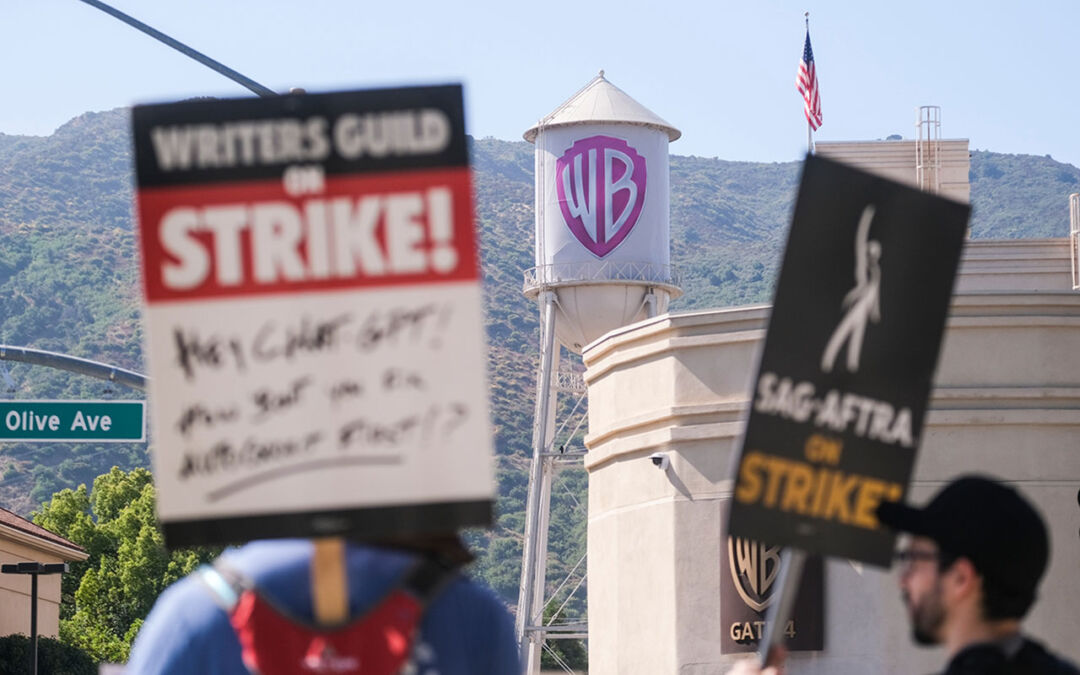Strong unions push firms to reduce riskier debt, lowering risks of unemployment for U.S. workers

Unionization efforts and labor organizing are increasingly ubiquitous in the United States. Indeed, July 2023 was one of the busiest months for strikes in 30 years, following two years of rising numbers of strikes and unionization drives across U.S. industries. Ongoing writer and actor strikes in Hollywood and the recent strike by autoworkers against General Motors Co., Ford Motor Co., and Stellantis NV are dominating news coverage but are among a far larger number of union actions taking place.
This wave of organizing is driven in part by high worker power due to low unemployment and other U.S. labor market conditions. But it also is facilitated by strong public support for labor unions—which, at 71 percent, is at its highest point since the 1960s. Union members back unions for reasons ranging from job security, higher pay, and better health and retirement benefits, to improved workplace wellness and fairness and equality more broadly.
Many of these benefits also extend to nonunionized workers in what are known as spillover effects, such as nonunion firms offering higher wages or improved working conditions in order to remain competitive with their unionized peers. Similarly, unions have been shown to benefit the broader community in other ways, with increased civic participation and racial solidarity among those who are part of a union.
Yet the direct effect of unions on wages and work equity may actually understate the broader economic benefits of unions. In new research, we show that stronger unions have the unintended benefit of improving overall financial stability in the economy by prompting firms to make less risky borrowing decisions. This is because the collective bargaining process pushes firms to take fewer financial risks, thereby reducing the prospects of firms going bankrupt or undergoing layoffs.
This is an often-overlooked aspect of the role of unions in the economy: Union-induced financial stability can reduce the risk of unemployment for both unionized workers and the broader workforce alike.
In other words, firms care about having financial flexibility, and they make safer borrowing choices if their workforce is unionized and there is a possibility of having to ride out a strike. These safer financial choices help firms endure not only strikes, but also any potential economic adversity, including periods of economic recession—which affect all workers in the economy.
Crucially, our research also reveals that the adoption of so-called right-to-work laws, which weaken the power of unions, lead to significant increases in risky borrowing by firms because of the reduced need for firms to stay financially flexible. We document that firms in states that passed such laws reduced safer long-term borrowing by these firms and instead increased their use of riskier short-term debt—a difference in borrowing patterns that matters in times of economic turmoil.
During the financial crisis in 2007–2008, for example, we find that for each additional percentage of a firm’s total debt that was held long term, firms reduced employment by around one-third of a percent less than otherwise-similar firms, even after accounting for each firm’s total level of borrowing. Other academic work similarly documents that these differences in borrowing patterns mattered both during the Great Recession of 2007–2009 and the Great Depression of the 1930s.
In Conversation with Daron Acemoglu
May 8, 2023
The passage of right-to-work laws might therefore have additional adverse effects for workers, outside of undermining unions, in terms of an increased risk of unemployment—which, during the Great Recession, for instance, would have added to the increase in the unemployment rate by about 0.68 percent. That is equivalent to more than 1 million additional unemployed workers at the end of the Great Recession in June 2009.
As U.S. workers continue to exercise their right to strike and demand livable wages from their employers, these findings on unionization and financial stability can shed light on how firms behave to endure labor actions and protect themselves from the financial impacts of strikes. This could shape how unions approach contract negotiations and define strategies for strikes.
Carefully considering the relationship between unions and financial stability also should be an essential part of the discussion on right-to-work laws and U.S. labor policy more broadly. It is well-known how empowering workers to unionize, bolstering existing unions, and supporting labor organizing and strikes improve outcomes for all workers, but these new findings may well extend those benefits to the stability of the broader U.S. economy—which could be extremely relevant when the next economic downturn hits.







